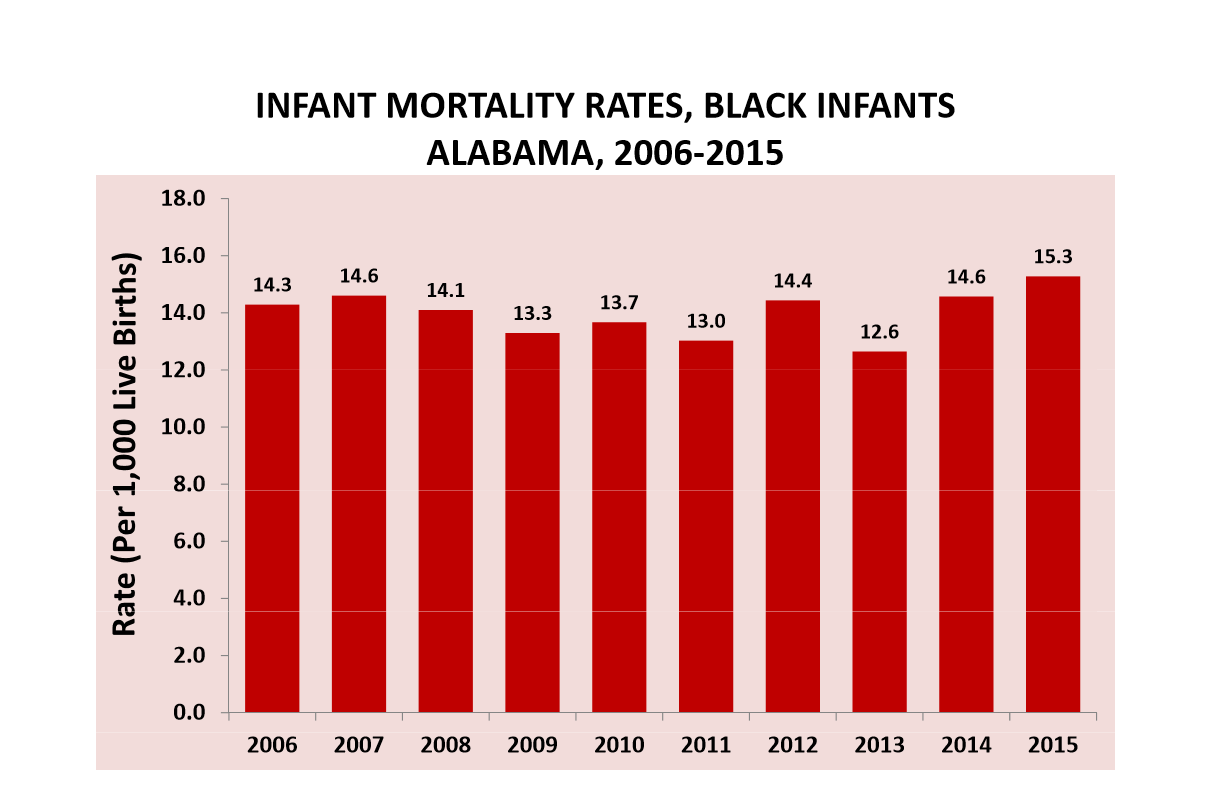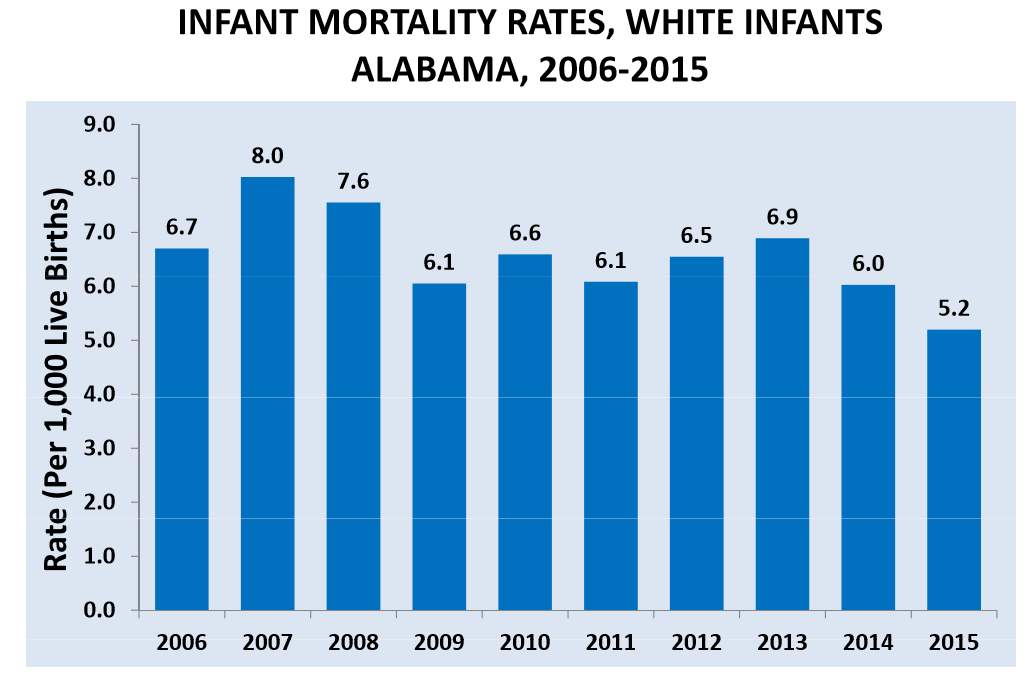By Ariel Worthy
The Birmingham Times
The mortality rate among black infants in Alabama was the highest it has been in that past 10 years and was nearly three times the rate of white infants in 2015. According to the Alabama Department of Public Health (ADPH) center for statistics, the black infant mortality rate for Alabama in 2015 was 15.3 per 1,000 births. The white infant mortality rate was at 5.2 per 1,000—its lowest in more than a decade.
“The racial disparity between black and white infant birth outcomes continues to be of great concern,” said State Health Officer Tom Miller, MD. “The black rate is almost three times the white rate in the state. There is much work to be done to address this ongoing challenge. We need to explore and transform social determinants of infant mortality in our population by addressing modifiable risk factors that contribute to unfavorable birth outcomes.”
There are a number of factors for the disparity, according to health officials.
The lack of access to health care could be one, said Janice Smiley, director of the Perinatal Health Division at the ADPH. Also, parents should put an infant alone in a crib and on its back to make sure the infant has a safe sleeping environment.


 In addition, people must consider that “socioeconomics is also a factor,” Smiley said. “Sometimes what your ZIP code is can matter more than how much money you have.”
In addition, people must consider that “socioeconomics is also a factor,” Smiley said. “Sometimes what your ZIP code is can matter more than how much money you have.”
A mother’s health must be taken into account, too.
“We also know that pregnancy is the continuum of that life in the mom, and the factors that impacted her health up to that point are important, as well,” Smiley said. “We have staff that provides education for parents and grandparents. It is our goal to discuss preconception health and know the family history, what’s prevalent in the family. [It’s good to] start talking to the doctor early.”
Planned pregnancies can also help, she said: “We talk about [parents] planning their pregnancies, because approximately 50 percent of pregnancies in the state are not planned.”
And, Smiley said, “if you’re not engaged in healthy activity, that will have an impact on the early development of your baby, as well.”
Steps to improve birth outcomes include expanding fetal and infant mortality review activities at the local level; improving education about infants’ safe-sleeping habits; emphasizing the need for appropriate spacing between pregnancies to at least an 18-month intervals; improving access to appropriate health care, including long-acting reversible contraceptives and medications to prevent premature birth.
The infant mortality rate (15.3) for black infants in Alabama is also higher when compared with the infant mortality rate (11.1) for black infants nationally. The same is true for white infants: the infant mortality rate (5.2) for whites in Alabama is higher when compared with the infant mortality rate (4.9) for white infants nationally.




